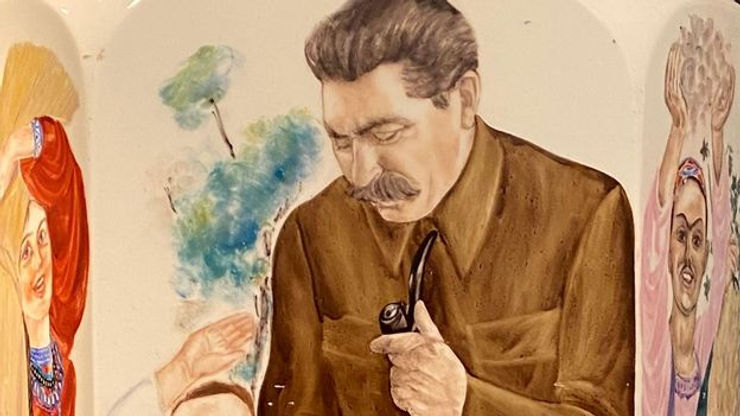By: Crystal Ge
Itis 1917 and in Russia the Bolsheviks have seized
power, de-throning the Tsar and declaring a revolutionary
communist regime that would transfer the means of
production to the people. Within a year, the royal family and
their entourage lie dead as imperialism is violently dismantled
to make way for Russia’s radical new future.
But one important remnant of the old order remains: the
Imperial Porcelain Manufactory (IPM) on the outskirts of the
city now known as St Petersburg. More like this: – How a
painting fought Fascism – Can propaganda be great art? – Why
Orwell’s 1984 could be about now Renaming it the State
Porcelain Manufactory, the Bolsheviks, under Vladimir Lenin,
took control of this symbol of tsarist decadence, seeing
surprising potential in it as a wheelhouse for artistic
innovation and the production of propaganda. Stocks of
unpainted, snow-white china became a tantalising canvas for
avant-garde artists keen to express their utopian ideologies
and rouse enthusiasm for the new socialist era, giving this
delicate, bourgeois material an unexpected, almost
contradictory, second life. In a curious twist, crockery once
intended for the lavish feasts of the Romanovs was now
emblazoned with militant Reds trampling upon their white
ermine furs (Adamovich, 1923). Danko’s porcelain chess set
(1923) used the same colour play, with a red army taking on a
white skeleton king whose proletariat pawns are in chains.
Forced famine, mass incarceration and summary executions
had left the utopian vision of 1917 in tatters. There are many
things one can buy at an auction, especially if you’re looking
for a good antique. Dining chairs, for example. Maybe a nice
set of curtains. When the barrister Cecil Chubb attended an
auction in Salisbury, Wiltshire in 1915, his sights were set on
something domestic. But in that feverish atmosphere of the
auction house – a place where it’s easy to get swept up in the
thrill of bidding and fear of losing out on something one of a
kind – he made an unexpected purchase. He bought
Stonehenge for £6,600 (about £680,000 by today’s value). It
happened, he said, “on a whim”. Chubb, who was the last
private owner of Stonehenge, only laid claim to the site for
three years. In 1918 he passed the stones into public
ownership, where they have remained ever since under the
care of English Heritage.











